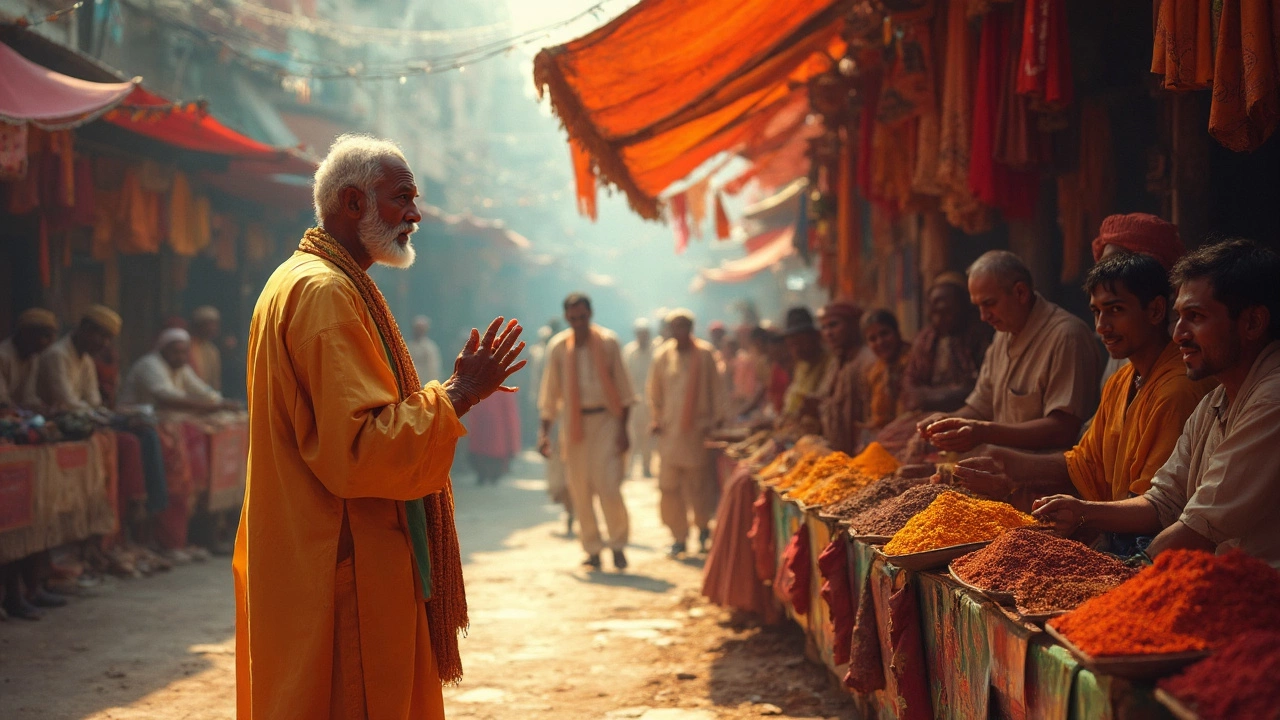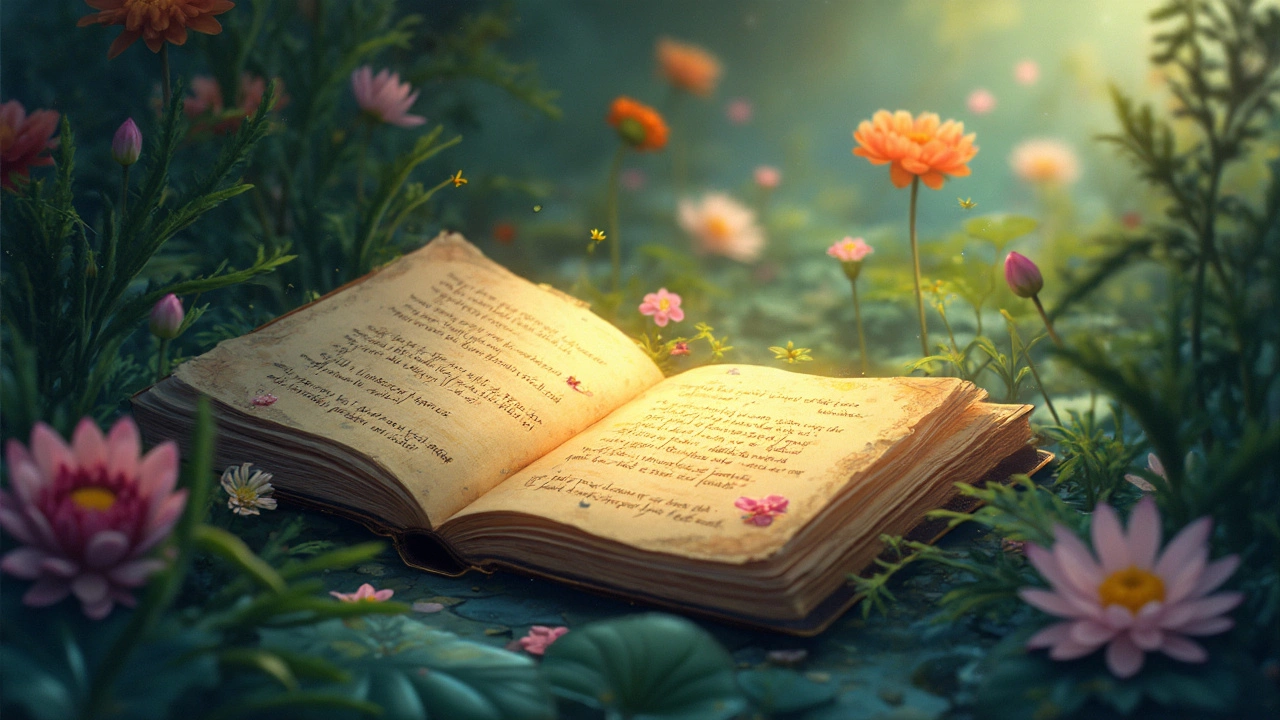Exploring the World of Short Poetry in India
 Mar, 13 2025
Mar, 13 2025
So, what do we call those tiny, beautifully crafted lines of poetry? In the expansive universe of poetry, small poems hold a special place. They're known by many names, with each culture adding its unique flavor and form. In India, short poetry can range from crisp couplets to intricate small verses, each style embodying a wealth of tradition and emotion.
In essence, these mini poems might be short in length, but they're towering in impact. Think of them like a concentrated dose of creativity—packing a punch in just a few lines. But let's not forget, while short, they also have a history rich in diversity and cultural depth, with roots that spread wide across the Indian landscape.
Defining Short Poetry
When we're talking about short poetry, we're diving into a realm where every word counts. These are poems that express big ideas through small packages. They are often defined by their brevity but also by their ability to evoke deep emotion or convey profound thoughts. Now, you're probably wondering how short is "short" in poetry terms?
General Features
Short poetry typically refers to works no longer than a dozen lines, sometimes even less. In some cases, these poems might only span a phrase or two, like haikus. The key lies in their precision and economy of language. Every word must matter because there's no room for fluff.
Types and Examples
Globally recognized forms like haikus, epigrams, and couplets exemplify short poetry. In India, there are traditional forms connected to this brief style, such as Doha—a rhyming couplet popularized by medieval poets like Kabir and Rahim. These forms are not just relics of the past; they continue to influence modern poetic expressions.
Each of these styles offers a unique glimpse into human experience, using the least amount of words to say the most. This economy of expression is what draws many to write and read short poetry. It's like being gifted the universe in a nutshell.
Popular Perception
People often consider small poetry as an approachable form of writing. Its simplicity can make poetry more accessible to the reader who might be intimidated by longer verses. Short poetry has this universal appeal because, in a way, life itself is often a collection of fleeting moments, best captured in brief, powerful snapshots.
According to a survey conducted in 2022, 65% of poets report engaging with short poetry weekly, finding it an ideal format to experiment with creativity and emotional expression.
Popular Forms in India
Short poetry in India is a treasure trove, rich with variety and cultural heritage. Each form carries its distinct rhythm, flavor, and charm, drawing from the nation's diverse linguistic tapestry.
Haikus: A Global Influence
While traditionally Japanese, haikus have found a home in India too. These short poems, often based on nature, take three lines with a 5-7-5 syllable structure. Indian poets have adopted this form, infusing it with local color and context. Imagine capturing the essence of a monsoon or the serenity of a blooming lotus in just three lines!
Couplets: The Punchy Expression
The couplet is another beloved form of short poetry in India. Whether in Hindi, Urdu, or other languages, couplets are often used in songs, proverbs, and literature to convey poignant messages or wit. The beauty of a couplet lies in its ability to deliver a powerful punchline with brevity.
Limericks: Playful and Engaging
Limericks have also made their mark, with their distinct aabba rhyme scheme. They bring humor and playfulness into the realm of poetry, making them a favorite at cultural events and gatherings. Although originally from Ireland, the Indian rendition often includes themes and references relevant to local culture.
Bhakti Verses: Spiritual Depth
In the spiritual realm, short poetry takes the form of Bhakti verses. These are often short hymns or chants, expressing devotion toward a deity. Names like Kabir and Mirabai stand as titans in this genre, using these concise forms to explore themes of spirituality and existentialism.
| Form | Origin | Line Structure |
|---|---|---|
| Haiku | Japan | 3 lines (5-7-5 syllables) |
| Couplet | Various | 2 lines |
| Limerick | Ireland | 5 lines (aabba rhyme scheme) |

Cultural Significance
Short poetry in India isn't just a blip in the literary world; it's a crucial thread in the fabric of cultural storytelling. These petite verses have a knack for capturing the vast landscapes of emotion, spirituality, and social life that make up India. But why are these short forms so culturally significant?
Historical Roots and Diversity
The history of small poetry in India dates back centuries, reflecting the linguistic and cultural diversity of the region. Ancient texts like the Vedas utilized short forms for hymns and verses, which over time evolved into various regional styles. From the Hindi couplet known as 'Doha' to Tamil 'Venpas' or Bengali 'Lalon Geeti', each region has embraced its own style, reinforcing a sense of identity and tradition.
Powerful Tools for Expression
In a country as diverse as India, where dozens of languages and dialects coexist, brevity in poetry becomes a potent tool for expression. Short poetry serves as a democratic platform, breaking barriers of literacy and social class. These forms often tackle broad themes like love, philosophy, and faith while remaining accessible to all.
Modern Influence and Integration
Today, short poetry continues to evolve, integrating modern themes while maintaining its roots. In the digital age, these succinct forms are making waves as they fit perfectly in social media spaces, reaching younger audiences. The blend of traditional styles with contemporary issues resonates deeply in a society that balances progress with tradition.
| Language | Famous Short Form | Theme |
|---|---|---|
| Hindi | Doha | Moral and Philosophical |
| Malayalam | Muthu | Nature and Devotion |
| Tamil | Venpas | Love and Mysticism |
Short poetry's role in India is more than artistic; it's woven into the cultural consciousness, shaping and reflecting the values of the society. Whether it's in cheeky couplets or profound phrases, these little poems pack a mighty punch, ensuring poetry remains a living, breathing part of culture.
Writing Tips for Short Poetry in India
Writing short poetry might seem simple because of its size, but condensing emotions and thoughts into just a few words requires skill. Here's how you can do it effectively.
1. Start Small and Specific
Pick a specific theme or emotion you want to convey. It could be something as simple as the way sunlight filters through trees or the feeling of first rainfall. Don't get caught up trying to write the next epic; focus on capturing a single moment.
2. Choose Your Words Wisely
Every word counts in small poetry. Opt for words that carry strong imagery or evoke emotion. This is where your vocabulary becomes a key tool. Identify words that tell your story without extra fluff.
3. Structure Your Lines
Understanding the structure is critical. Try crafting couplets or dabbling in forms like haikus. Remember, each form has its rhythm, so select one that complements the mood of your message.
4. Play with Rhythms and Sounds
Even though short, rhythm adds musicality to your poetry. Consider the sound of your words; sometimes a line with a certain beat hits differently. Adding alliteration can also intensify the impact.
5. Edit Ruthlessly
First drafts are rarely perfect. After writing, take a break, then come back with fresh eyes. Read your poem aloud to see if it flows. Remove unnecessary words—each should enhance the poem's emotion or meaning.
6. Embrace Cultural Elements
Indian poets have access to a rich cultural and linguistic backdrop. Infuse elements from your personal culture, whether it's imagery from your region or phrases from a local language. This adds depth and uniqueness.